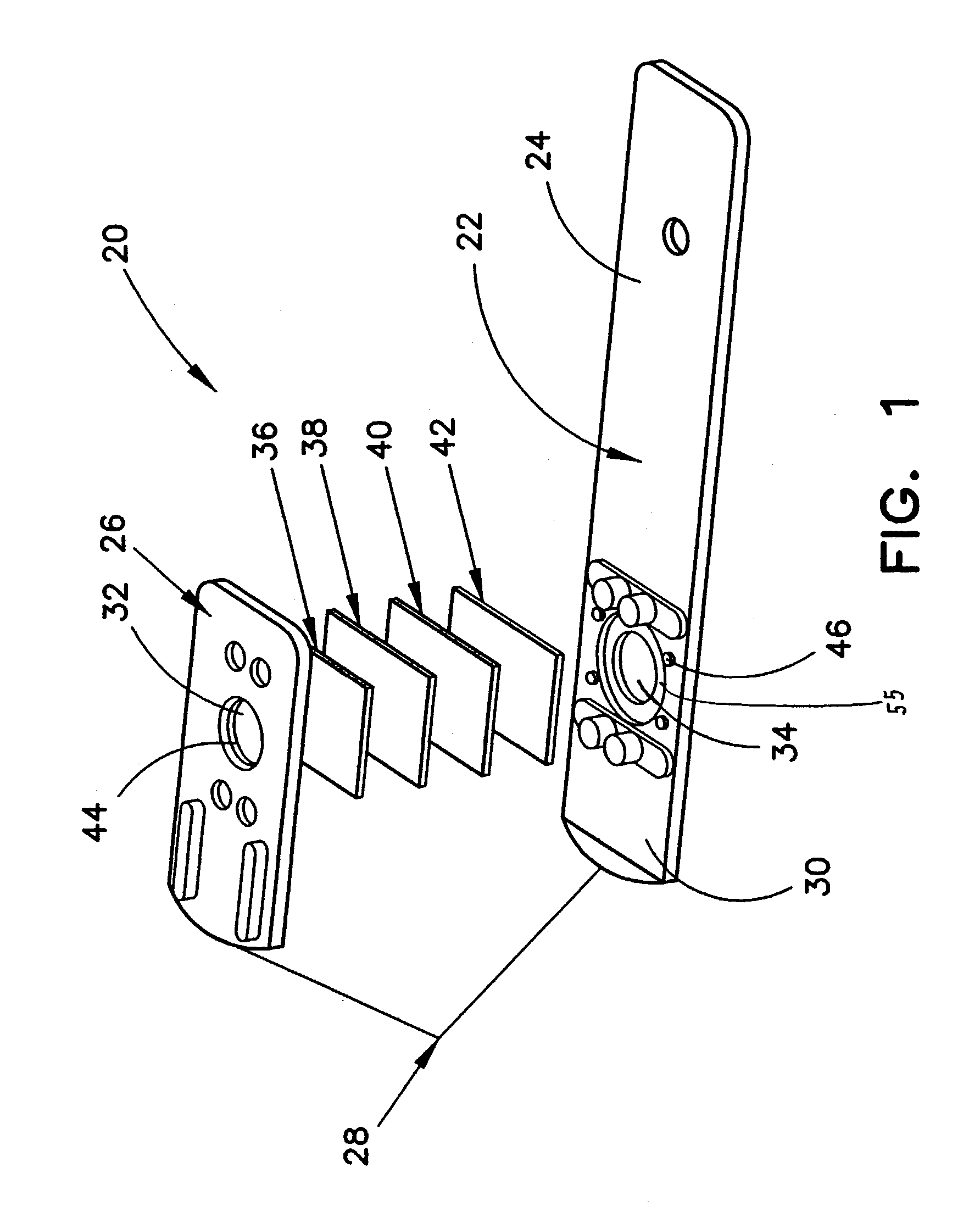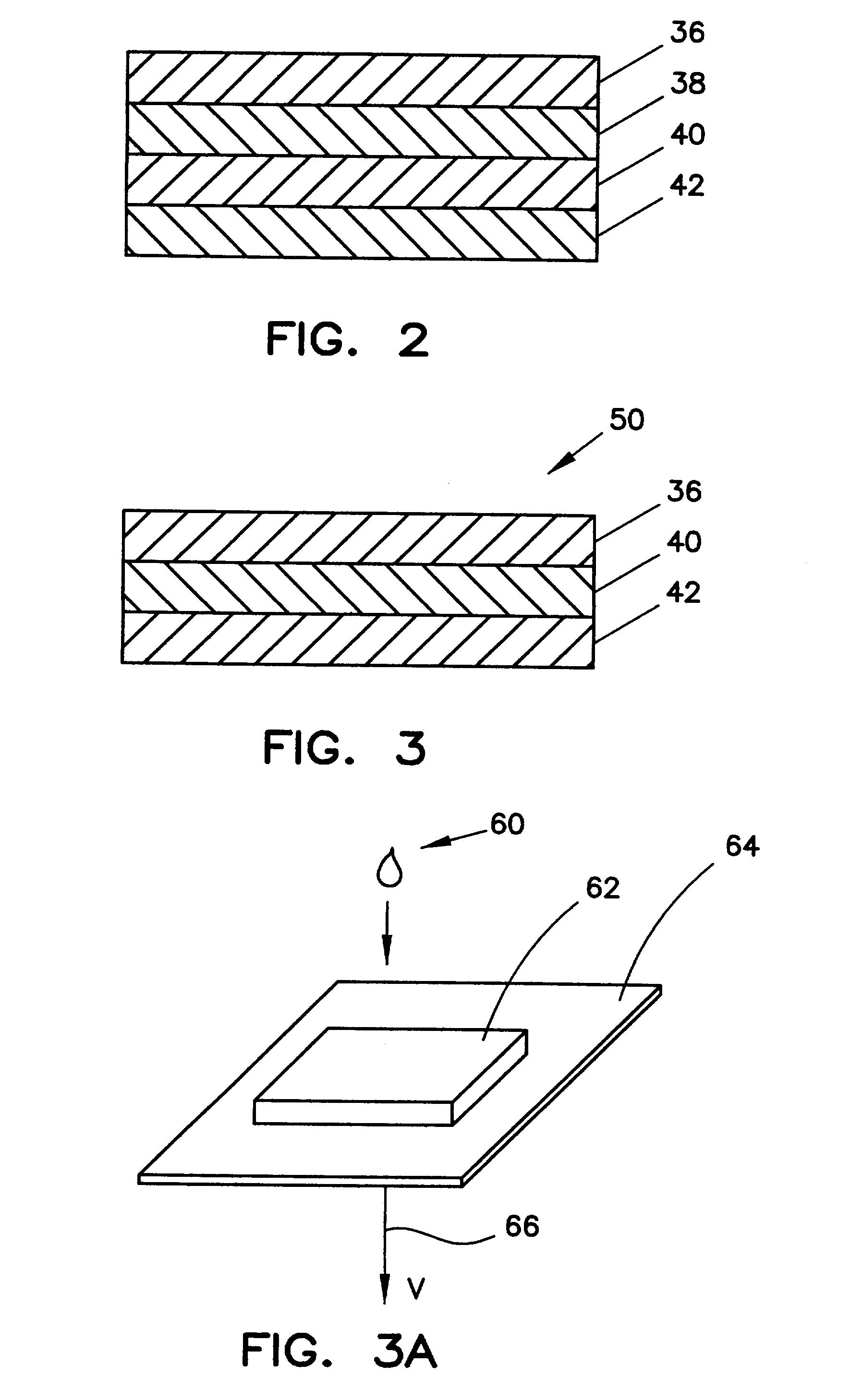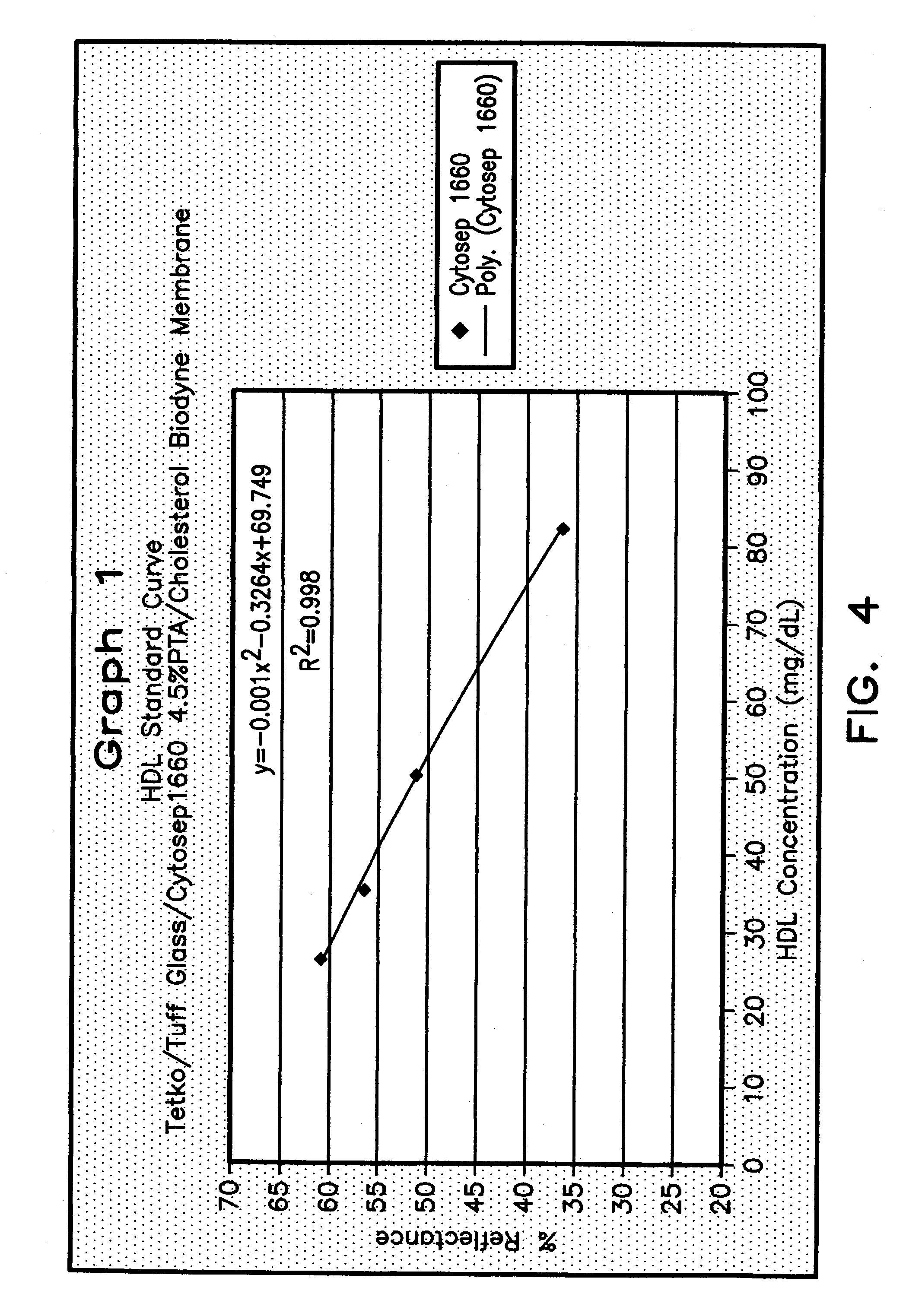Method for determining HDL concentration from whole blood or plasma
a technology of plasma and hdl, which is applied in the direction of chemical methods analysis, chemical indicators, instruments, etc., can solve the problems of blood cells being expected to migrate to the reaction layer, interfere with the test, and the glass fiber matrix does not provide complete separation of blood, etc., to achieve easy and fast assembly, reduce material costs, and reduce the effect of cos
- Summary
- Abstract
- Description
- Claims
- Application Information
AI Technical Summary
Benefits of technology
Problems solved by technology
Method used
Image
Examples
example 1
Preparation of Layer 38
[0088]Ahlstrom Grade 144 glass fiber membrane having a thickness of 0.378 mm was impregnated with a solution with the following composition:
[0089]
D.I. Water800gNaCl10gSorbitol50gCitric Acid0.21gpH 4.2–4.4 (adjusted with HCl or NaOH)Q.S. to 1000 mL with D.I. Water
The membrane was placed on a conveyor and submersed in a re-circulating bath of the above impregnation solution at a rate of 0.5 ft / min. It then entered a tunnel of blowing warm air (98°–106° F.) and low humidity (less than 5% Relative Humidity) to dry completely. In another test run, Schleicher and Schuell 33 Glass, a borosilicate glass with acrylic latex binder with a thickness of 0.370 mm was substituted for the Ahlstrom Grade 144 glass fiber membrane.
example 2
Preparation of Blood Separation Membrane 38
[0090]The same fiber layers were used as in example 1, except the sorbitol component of the impregnation solution was changed as indicated below:
[0091]
Water, D.I. Purified800gNaCl10gSorbitol75gCitric Acid0.21gpH 4.2–4.4Q.S. to 1000 mL with D.I. Water
Schleicher and Schuell Grade 30, 31, and 33, and Whatman GF / DVA, GF / D, F145-02, F147-11, F147-14, and 487-09 were also used. (See Examples 15 et seq.)
example 3
Preparation of Cholesterol Detection Membrane 42
[0092]A Pall Biodyne A Nylon 6,6 Membrane with a pore rating of 0.45 microns and a thickness of 5.5–6.5 mm was impregnated with a solution with the following composition:
[0093]
D.I. Water200gTriton X-1000.771gCholesterol Foundation**532gBSA, Std. Powder13.88g10% Gantrez AN-139 (w / v)95.61gCHAPS19.82gSucrose37.01gpH 4.9–5.1Potassium Ferrocynanide0.116gTOOS0.37gMAOS4.63gCholesterol Oxidase148KUPeroxidase462.6KUBovine Cholesterol Esterase92.5KULPL-311 Cholesterol Esterase240.6KU4-Amino anti-pyrine4.163gFinal pH 5.3–5.5Q.S. to 1000 mL with D.I. Water
The membrane was submersed in a re-circulating bath of impregnation solution at a rate of 1 ft / min. It then entered a tunnel of blowing warm air (98°–106° F.) and low humidity (<5% RH) to dry completely. The Cholesterol Foundation indicated above with ** was made up of the following constituents:
[0094]
D.I. Water800gSodium Citrate, dihydrate30gPVP K-3060gBenzoic Acid2gBSA, Std. Powder4gEDTA, disod...
PUM
| Property | Measurement | Unit |
|---|---|---|
| diameter | aaaaa | aaaaa |
| diameter | aaaaa | aaaaa |
| pore sizes | aaaaa | aaaaa |
Abstract
Description
Claims
Application Information
 Login to View More
Login to View More - R&D
- Intellectual Property
- Life Sciences
- Materials
- Tech Scout
- Unparalleled Data Quality
- Higher Quality Content
- 60% Fewer Hallucinations
Browse by: Latest US Patents, China's latest patents, Technical Efficacy Thesaurus, Application Domain, Technology Topic, Popular Technical Reports.
© 2025 PatSnap. All rights reserved.Legal|Privacy policy|Modern Slavery Act Transparency Statement|Sitemap|About US| Contact US: help@patsnap.com



